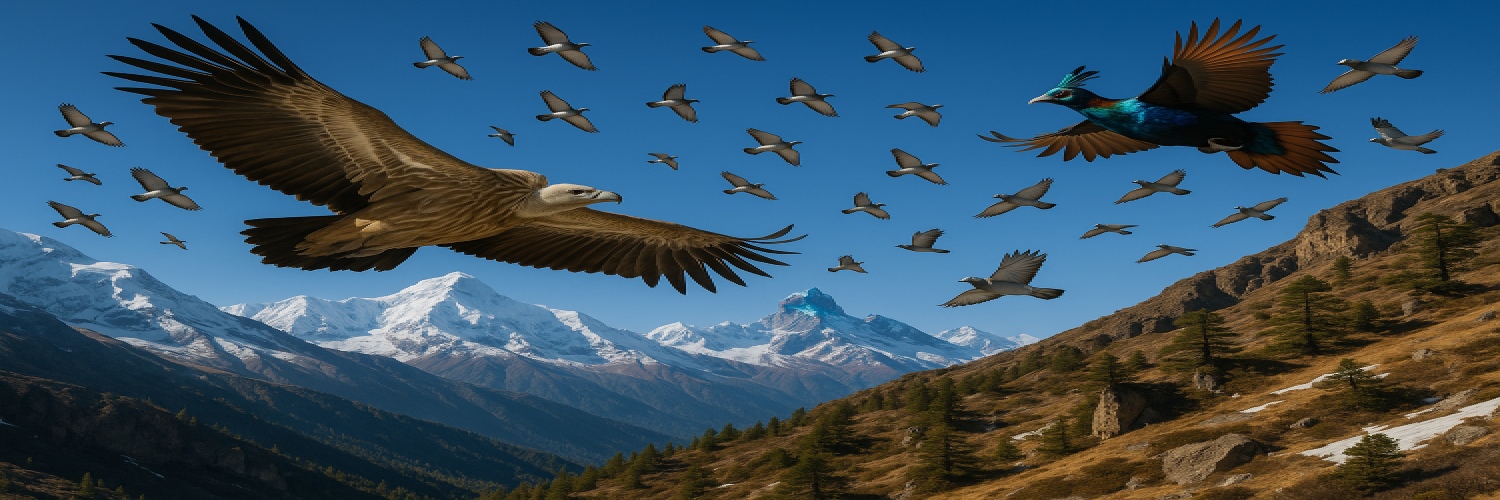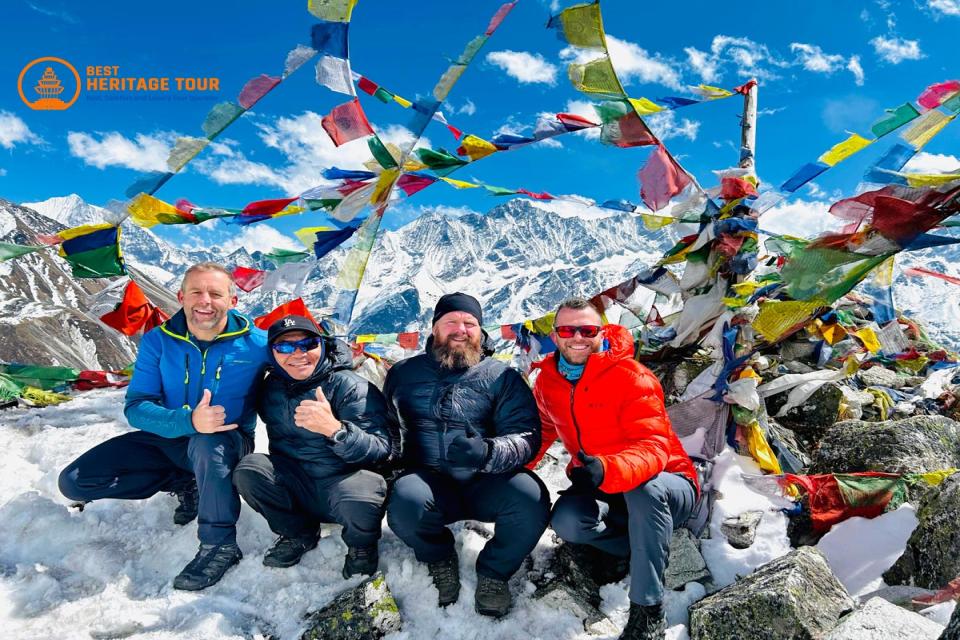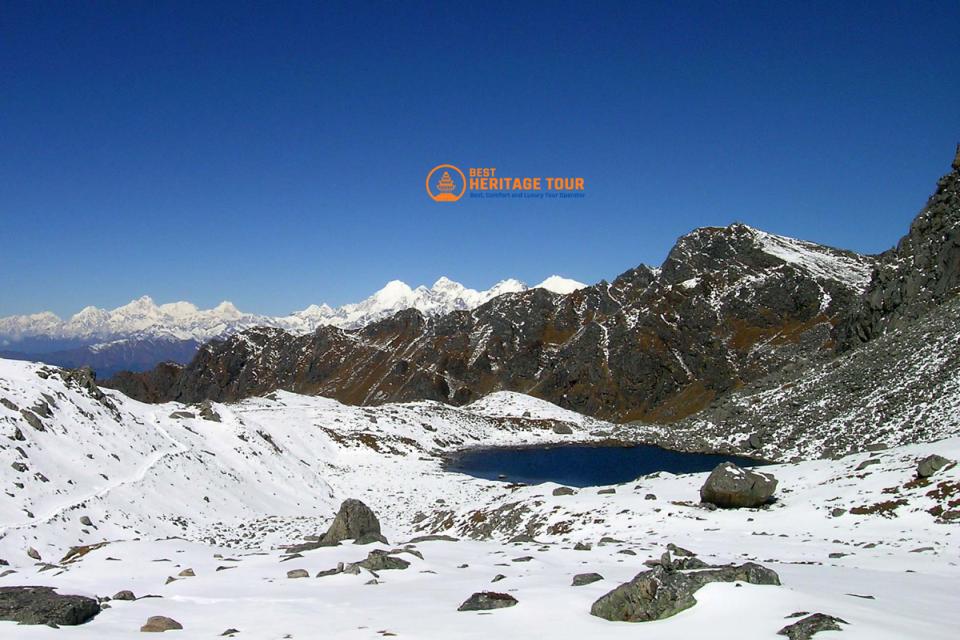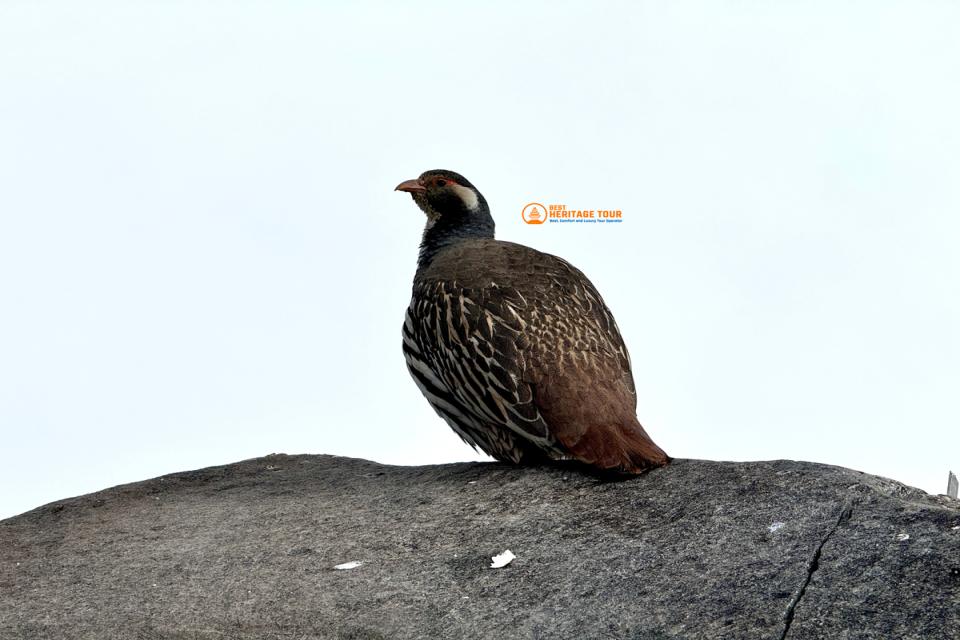Nepal’s Langtang region offers bird photographers an extraordinary blend of rich biodiversity, awe-inspiring landscapes, and deep cultural heritage. Nestled in the majestic lap of the Himalayas, Langtang National Park is a sanctuary for rare, endemic, and high-altitude bird species, making it one of the premier bird photography destinations in Nepal for 2026/27. The region’s pristine environment, spanning from dense subtropical forests to expansive alpine meadows and rugged mountain terrain, provides a unique canvas for capturing the vibrant colors and fascinating behaviors of both migratory and native birds.
Whether you are a seasoned professional photographer seeking rare subjects or a passionate nature lover eager to connect with Himalayan wildlife, Langtang offers countless opportunities to photograph birds in their natural habitats, all set against the backdrop of snow-capped peaks, crystal-clear streams, and lush forests. This harmonious blend of nature and culture makes Langtang a truly unforgettable destination for bird photography enthusiasts.
Why Choose Langtang for Bird Photography?
Diverse Elevation Zones
Langtang is uniquely positioned across a vast range of elevations - from around 1,500 meters up to over 7,000 meters - zcreating multiple ecological zones. This altitudinal gradient supports an impressive variety of bird species, including those specialized to survive in extreme alpine environments and those thriving in lush subtropical forests. This natural diversity means you can capture a wide spectrum of avian life within one region, from colorful pheasants in dense rhododendron thickets to hardy snowbirds high above the treeline.
Rich Avifauna
Langtang National Park hosts over 250 bird species, including rare, endemic, and globally threatened birds. The region is particularly renowned for its populations of pheasants such as the elusive Satyr Tragopan and Nepal’s national bird, the dazzling Himalayan Monal. Other notable species include the Snow Partridge, Yellow-billed Blue Magpie, and the charismatic Fire-tailed Myzornis. Bird photographers will find unparalleled opportunities to capture birds in pristine, natural settings, with clear views and excellent lighting.
Pristine Natural Habitats
Protected by Langtang National Park, these habitats remain largely undisturbed by human activity. Dense rhododendron and oak forests, alpine meadows bursting with wildflowers, and rugged rocky terrain provide diverse and photogenic backdrops. The natural quiet of the region allows photographers to observe and capture authentic bird behaviors, from foraging and flight to courtship displays, resulting in truly captivating wildlife portraits.
Opportunities for Rare Bird Photography
Langtang’s relative remoteness ensures many species face minimal disturbance, increasing the likelihood of sightings of elusive and rare birds. The region also serves as a migratory corridor for many species during spring and autumn, enhancing the diversity available to photographers during these peak seasons.
Key Birdwatching and Photography Spots in Langtang
1. Gosaikunda Lake
Location: High alpine zone (4,380 meters)
Bird Types: High-altitude specialists, migratory waterfowl
Best Time: May to October
Gosaikunda Lake is a pristine, turquoise alpine lake surrounded by rugged Himalayan peaks. Its crystal-clear waters attract high-altitude water birds such as the Brown-headed Gull and the rare, shore-loving Ibisbill with its distinctive curved bill. Snow-adapted birds like the Tibetan Snowcock and Himalayan Snowcock inhabit the rocky slopes around the lake, offering excellent subjects for photographers skilled in patience and long-range shots. The serene lake reflections and seasonal wildflowers provide stunning compositional elements that elevate bird portraits to artistic levels.
2. Langtang Village and Surrounding Forests
Location: Lower elevation forests (2,400-3,000 meters)
Bird Types: Forest pheasants, passerines, native species
Best Time: March to June, September to November
The dense rhododendron, oak, and conifer forests around Langtang village are alive with bird activity, especially during the spring and autumn migrations. Here, photographers can target elusive species like the brilliantly colored Satyr Tragopan and Himalayan Monal, which often dwell in dense undergrowth but occasionally perch in open clearings. Smaller birds such as the Fire-tailed Myzornis and the Spotted Laughingthrush add bursts of color and personality to the forest scenes. The interplay of light filtering through foliage provides ideal conditions for moody and intimate bird portraits.
3. Langtang National Park Buffer Zone
Location: Mixed forests and diverse altitudes
Bird Types: Raptors, woodpeckers, and various native birds
Best Time: Year-round, with peak activity in spring and autumn
The buffer zone of Langtang National Park encompasses mixed broadleaf and coniferous forests, attracting a variety of birds including powerful raptors like the Himalayan Griffon Vulture and the Crested Serpent Eagle. Woodpeckers such as the Great Spotted Woodpecker can often be seen excavating trunks, making for dynamic and action-packed photographs. The diversity of tree species and understory plants provides vibrant and textured backgrounds, enhancing wildlife portraits. This zone offers excellent opportunities for year-round bird photography, with seasonal changes adding variety to your portfolio.
Best Time to Visit Langtang for Bird Photography in 2026/27
-
Spring (March to June): The rhododendron forests burst into color, attracting breeding migratory birds. Clear skies and pleasant temperatures create optimal conditions for photography and trekking alike.
-
Autumn (September to November): Crisp, clear days provide brilliant lighting conditions for photography, and migratory species prepare to depart, creating dynamic birdwatching opportunities.
-
Summer (July to August): Though the monsoon brings rain and fog, some bird species become more active, especially at higher altitudes, offering unique photographic chances if you’re prepared for weather changes.
-
Winter (December to February): While many birds migrate to lower altitudes, hardy species adapted to cold and snow remain, offering a distinct but more challenging photography experience.
Combining Bird Photography with Trekking Adventure
Langtang’s well-marked trekking trails make it easy for photographers to access remote bird habitats that few visitors see. Trekking here is not only about breathtaking Himalayan panoramas but also about immersing yourself in natural wildlife scenes. You can spend quiet mornings tracking the movements of elusive pheasants or afternoons photographing colorful passerines in rhododendron thickets. Along the way, the warm hospitality of the local Tamang communities adds cultural depth to your experience, with opportunities for scenic portraits and storytelling through photography.
Tips for Bird Photography in Langtang
-
Bring a telephoto lens (300-600mm): Essential for capturing distant or shy birds with clarity and detail.
-
Shoot during golden hours: Early mornings and late afternoons provide soft, warm light perfect for vibrant bird colors.
-
Patience is key: Stay quiet and still to observe natural bird behavior and increase your chances of getting candid shots.
-
Dress in layers: Weather in the mountains can be unpredictable; being comfortable ensures longer, focused shooting sessions.
-
Respect wildlife and park rules: Avoid disturbing nests, stay on trails, and maintain a safe distance to preserve natural habitats.
Book Your Langtang Bird Photography Tour with Best Heritage Tour
Ready to capture Nepal’s Himalayan birdlife like never before? Best Heritage Tour offers expert-led bird photography tours that combine local knowledge, comfortable logistics, and access to the best birding spots in Langtang and Gosaikunda National Park.
Explore detailed itineraries and package options here:
Bird Photography Tour in Gosaikunda and Langtang National Park
Conclusion
Langtang is a premier destination for bird photographers looking for diversity, beauty, and adventure in one breathtaking Himalayan package. With over 250 bird species, varied habitats, and protected natural environments, it promises an unforgettable journey of discovery and stunning photographic opportunities.
Book your Langtang bird photography tour with Best Heritage Tour today to experience expert guidance, seamless arrangements, and the chance to capture Nepal’s rare and beautiful avian treasures in 2026/27.
Contact Best Heritage Tour:
Phone/ Whatsapp: +977-9851149197
Website: bestheritagetour.com
Email: info@bestheritagetour.com / bestheritagetour@gmail.com
Office Location: Thamel Marg, Kathmandu Nepal
Author: Best Heritage Tour
Date: 24th July, 2025




